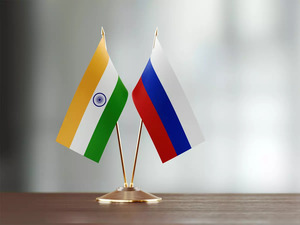India’s relationship with the former Soviet Union/Russian federation is built on mutual trust and shared interests.
India benefited industrially from the Soviet Union in the years following independence, which created a foundation for future progress. India received considerable aid from the Soviet Union for its industrialization beginning in the 1950s. It benefited from Soviet finance and know-how in the areas of defence, space, and atomic energy development. India lacked capital, foreign exchange, and technology; the Soviet Union filled in the gaps in India’s development storey by allowing the country to pay for projects in rupees under a special arrangement.
India now has access to dependable, economical, and high-quality military supplies and critical materials such as oil and oil products, fertilisers, and metals, among others. With Soviet assistance, India’s emerging public sector (PSUs) was created. In many ways, India’s connection with the Soviet Union aided India in becoming more self-sufficient.
During the Cold War and the decades of non-alignment, India was reliant on the Soviet Union for strategic matters such as the Jammu and Kashmir conflict. India’s space, technological, and nuclear advancements have all been aided by the Soviet Union. The Indo-Soviet Friendship Treaty of 1971 provided the platform for deepening collaboration (following the 1971 Indo-Pak conflict, in which Russia supported India while the US and China supported Pakistan). This bilateral relationship has been centred on military-technical cooperation.
In the 1990s, following the dissolution of the Soviet Union and the rise of Atlanticism in Russian foreign policy, Russia turned to the West and reduced its third-world contacts, and the two countries drifted apart for a period. During the difficult decade of the 1990s and thereafter, however, the two countries remained friends.
Post-Soviet India-Russia Relations after Putin: Contours and Interests
During the Soviet era, the USSR’s political, military, and economic programmes were viewed through a Marxist-Leninist lens. However, after the de-ideologization of Russia’s foreign and security policy framework in the aftermath of 1991, Russia’s economic interests trumped ideology, reshaping the playing field for countries like India.
Indo-Russian ties, which had suffered losses following the demise of the Soviet Union, have significantly improved. Bilateral high-level visits have become the norm rather than the exception, and mutual visits by heads of state are the norm rather than the exception.
The Indian military continues to rely on Russian hardware, however, the relationship is evolving into one of collaboration and cooperative manufacture rather than the traditional supplier-client relationship. Converging security objectives at the global and regional levels underpin the rising strategic features of the India-Russia bilateral relationship. India backs Russia’s appeal for multipolarity, multilateralism, and UN Security Council changes. Russia backs India’s bid for a seat on the United Nations Security Council (UNSC), as India wants a larger role in the international system.
Conclusion: Enduring Partnership
The fact is that both Russia and India believe in a multipolar world, and Russia has long been an important partner of India. Despite periodic worries, India’s bilateral relationship with Russia remains a cornerstone of its foreign policy and is expected to remain such. The two countries have a political understanding that is supported by a strong economic and strategic connection that is still evolving and enduring.
There are concerns that India is looking to the West to replace Pakistan as the US pivot in the South Asian region, as it aspires to Western defence technology (particularly aircraft), while Russia is warming up to Pakistan in order to challenge the US in Afghanistan and Central Asia. Despite the fears, bilateral relations will survive provided the two countries continue to play the balancing game.

